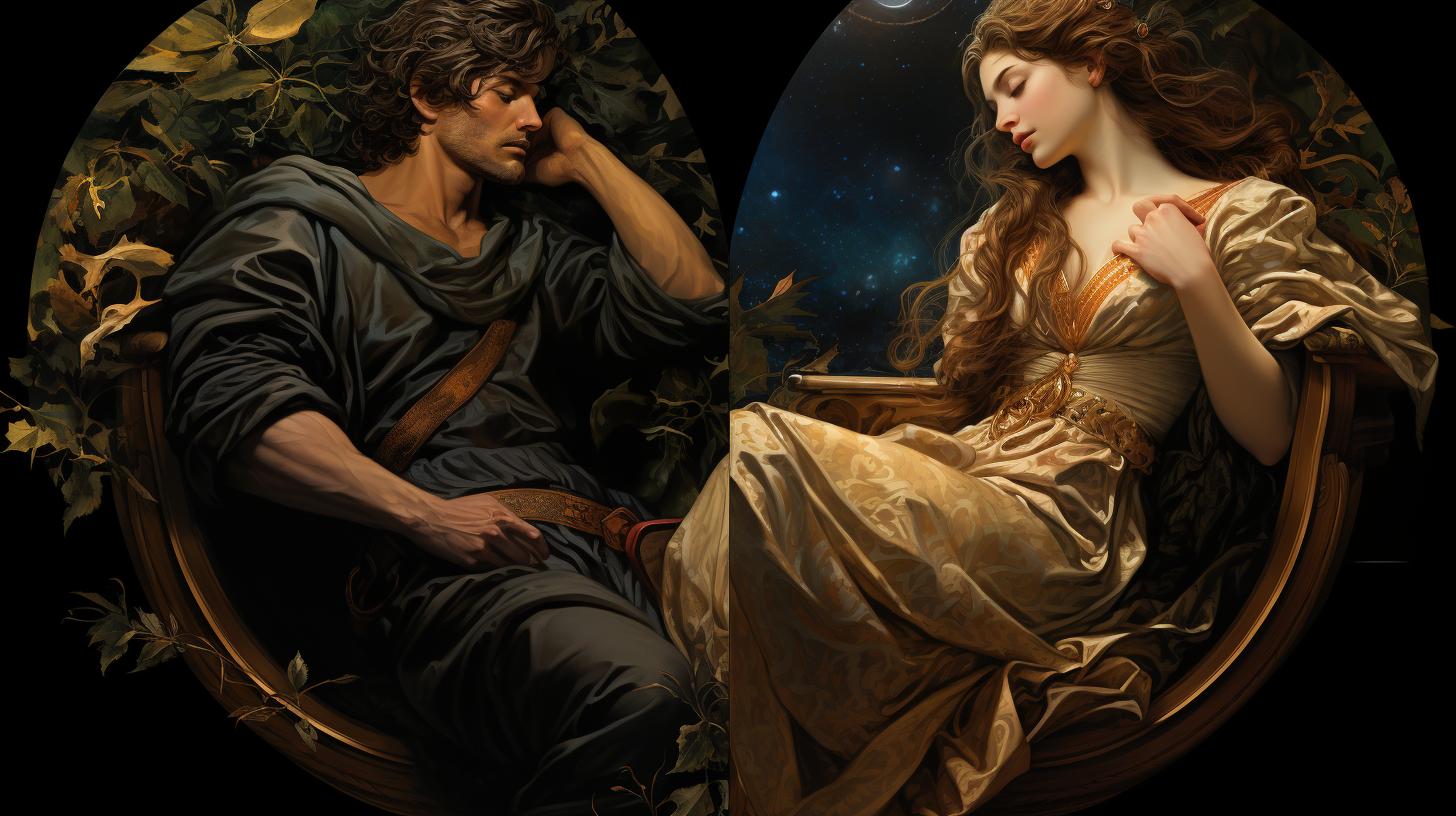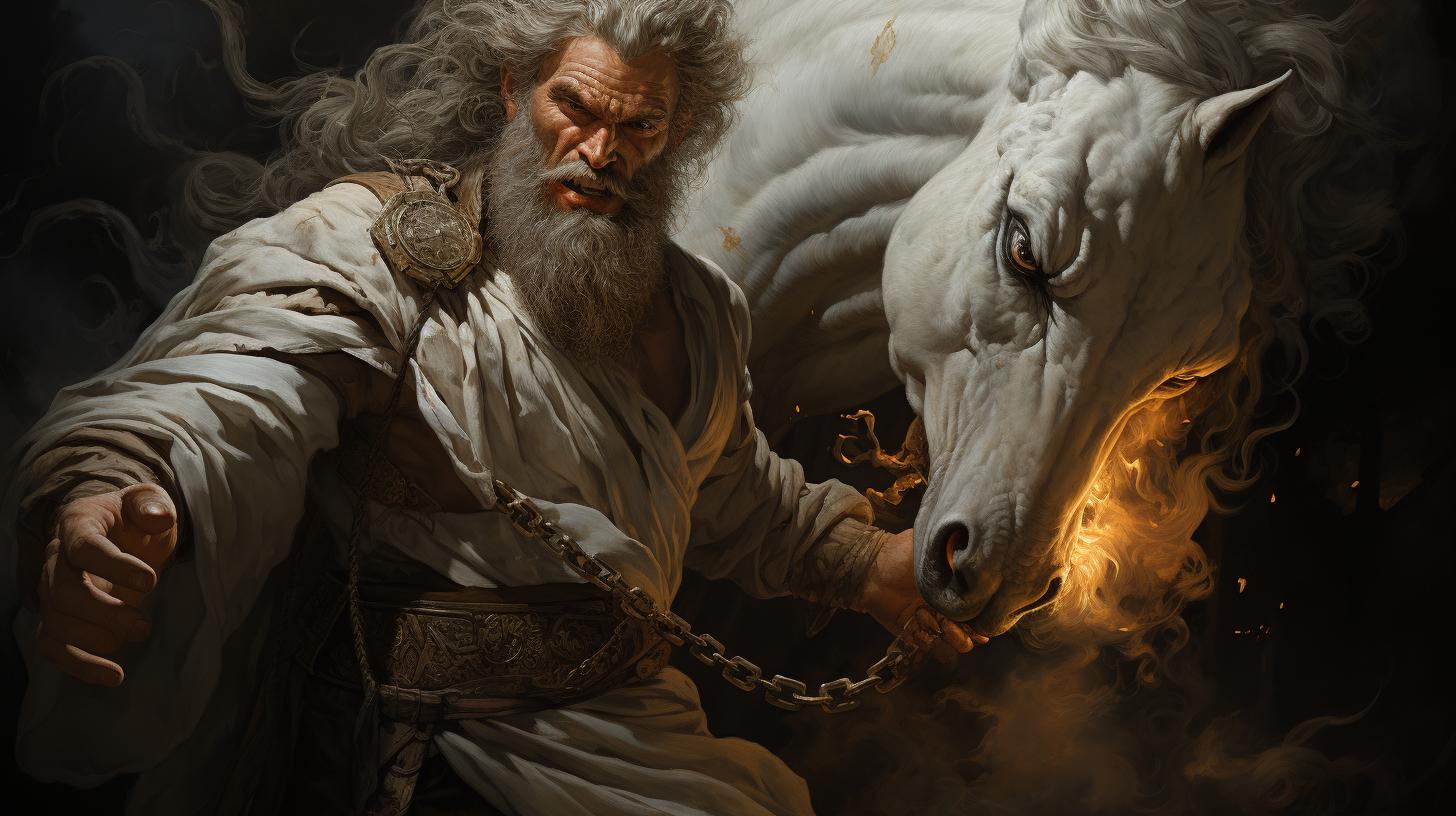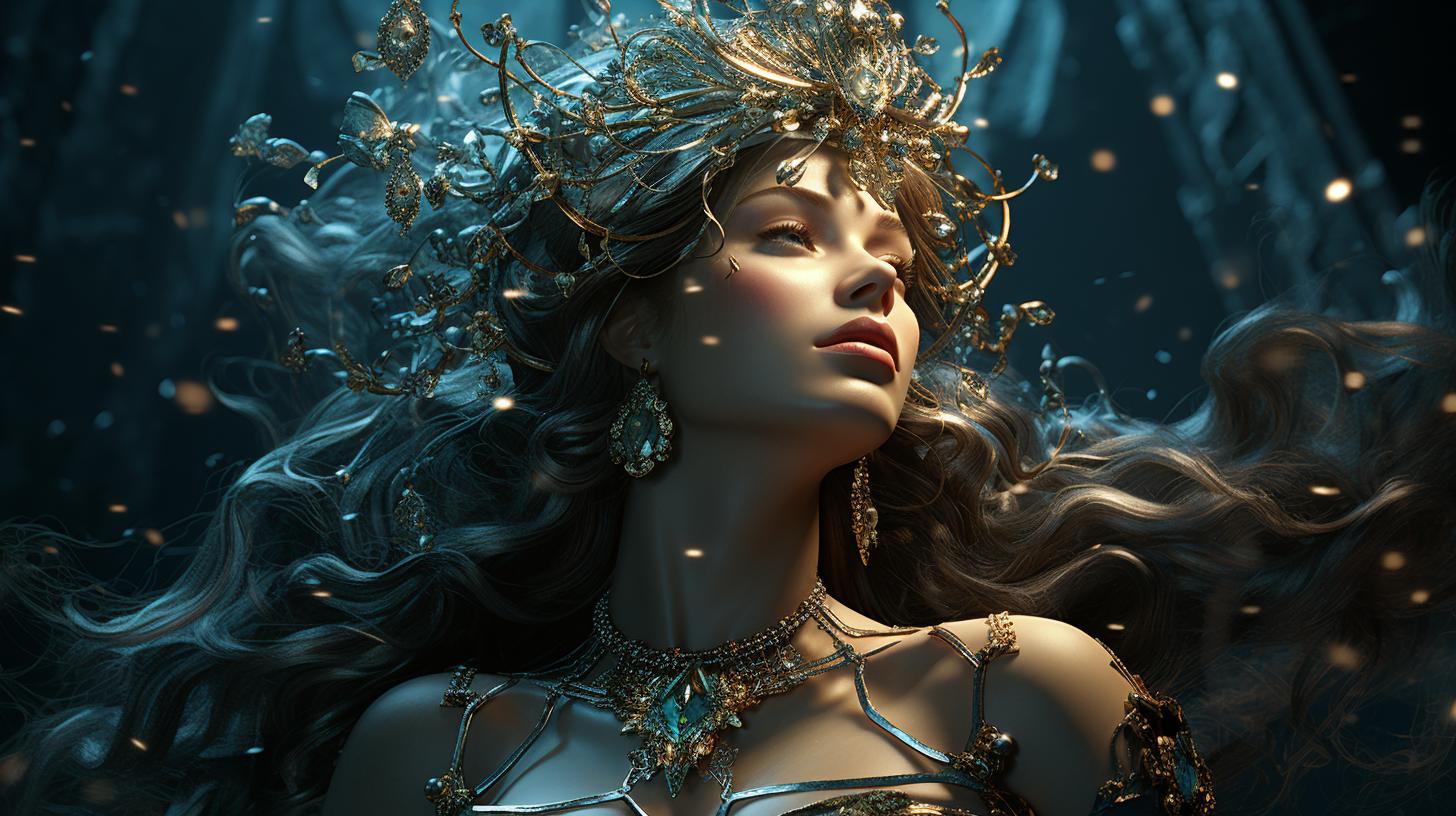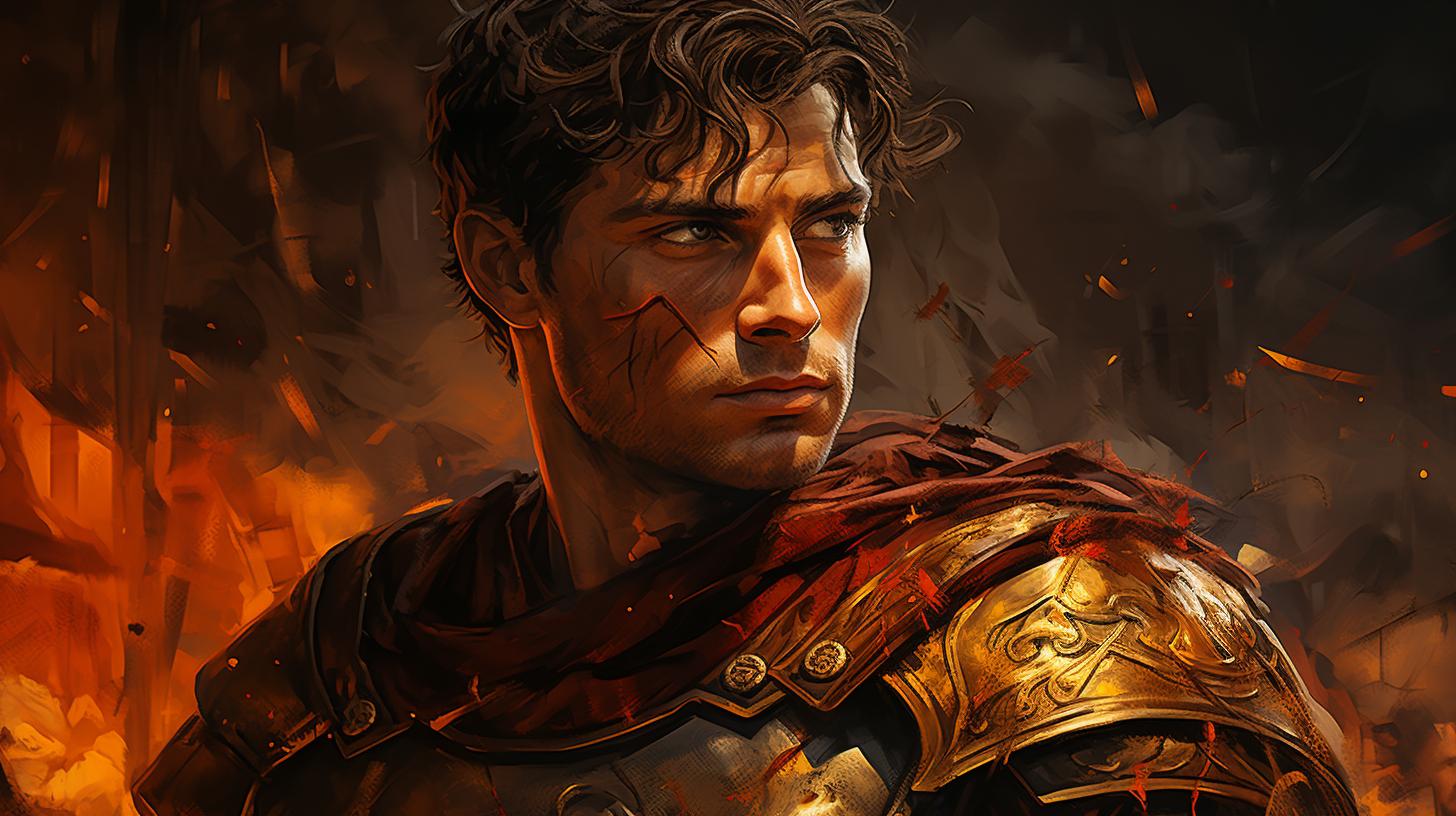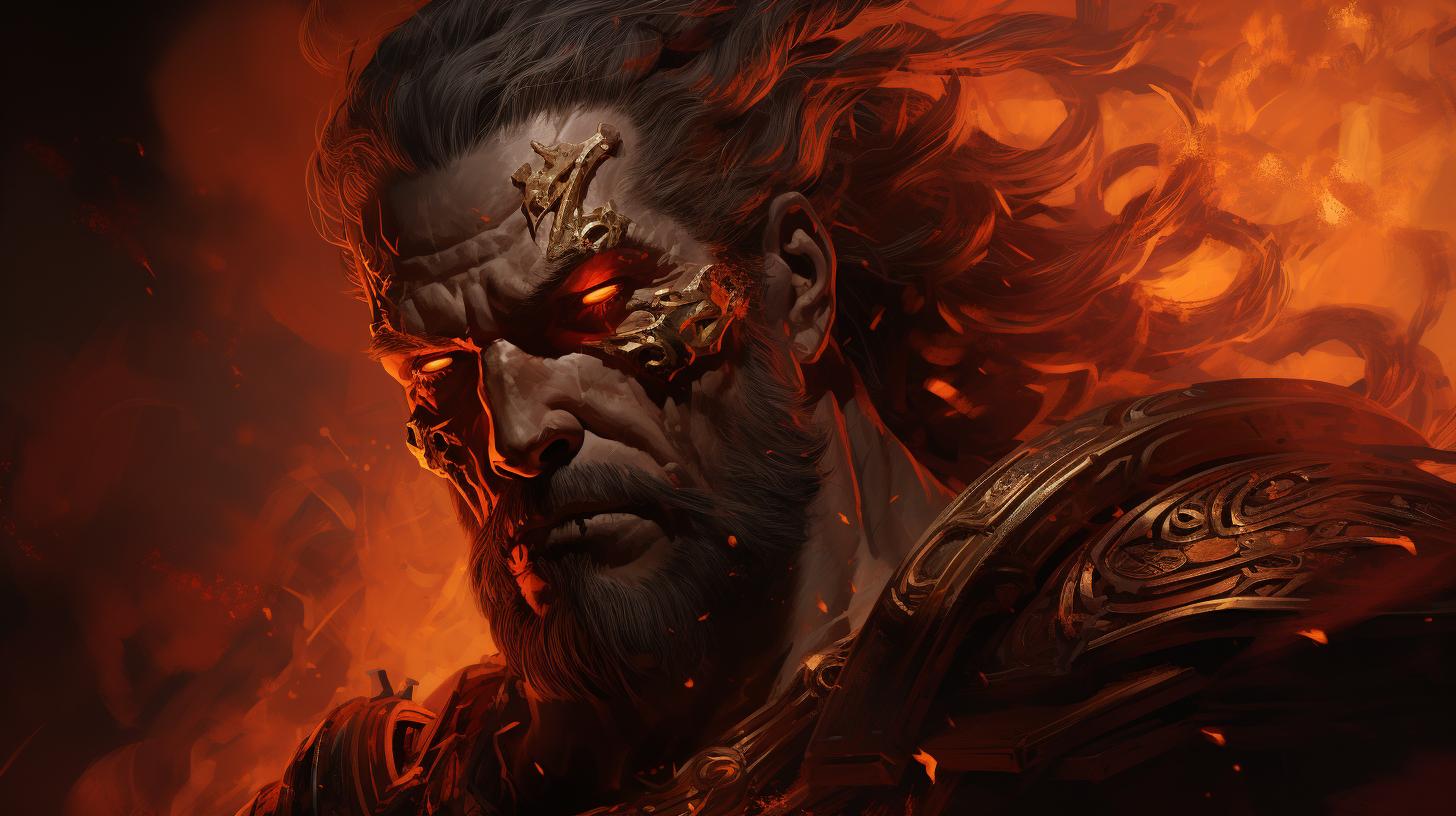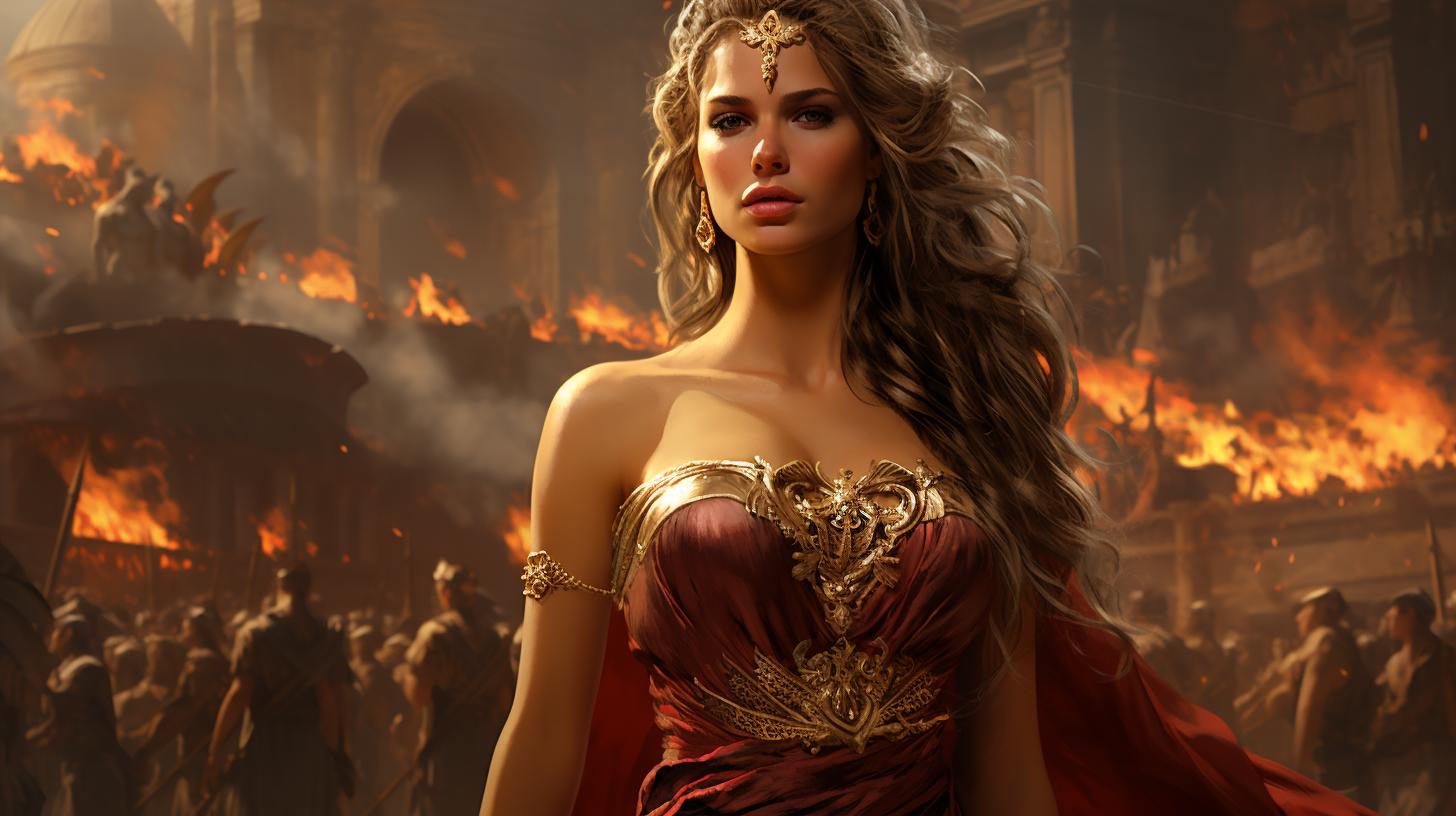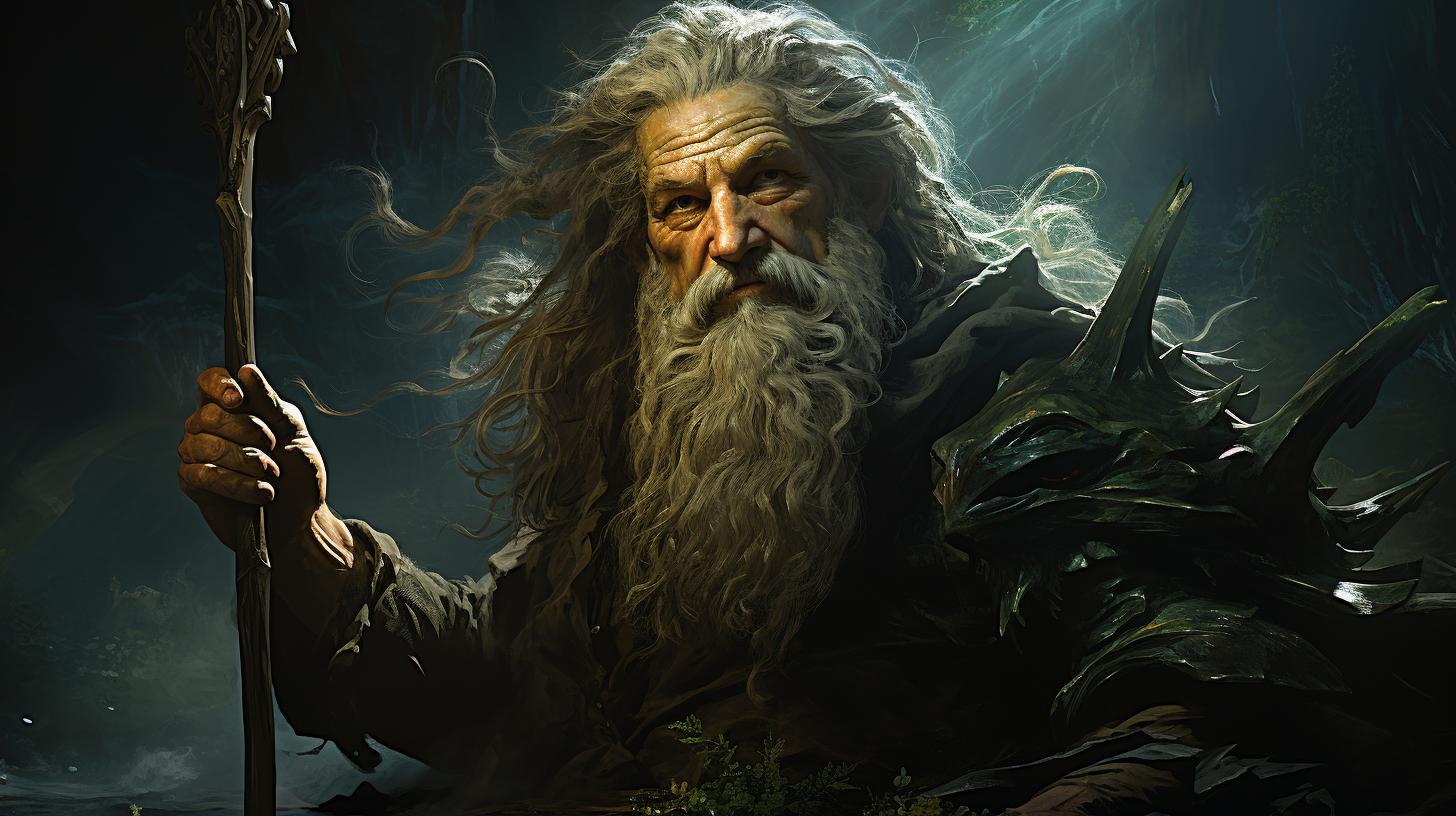Unveiling the Enchanting Tales of Calliope and Morpheus in Greek Mythology
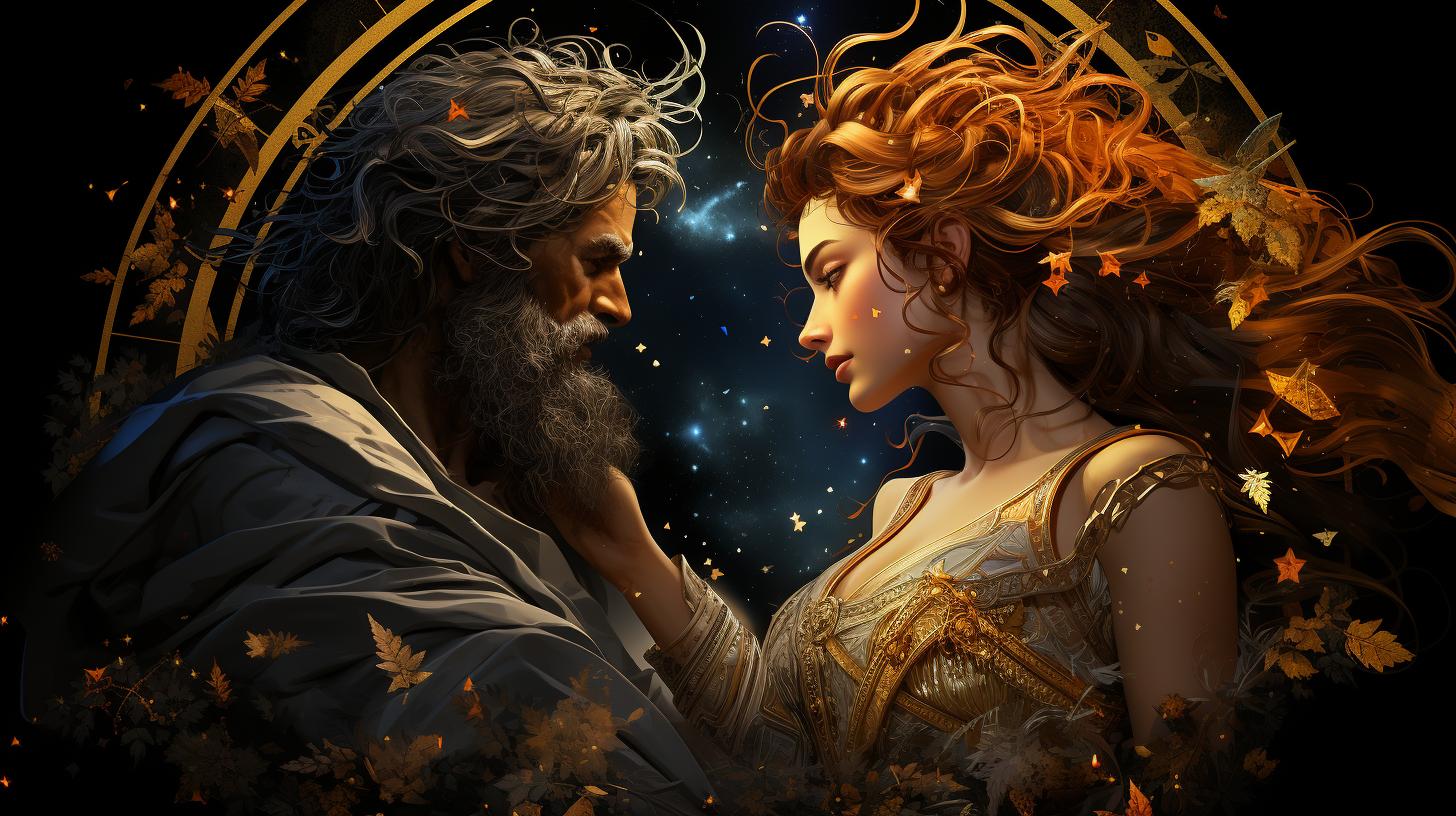
Calliope and Morpheus hold significant roles in Greek mythology. Calliope, one of the nine Muses, is revered as the patroness of epic poetry. She’s also known as the mother of renowned musician Orpheus.
Morpheus, on the other hand, is the Greek god of dreams, responsible for shaping and delivering an array of visions during sleep. As we delve into their stories and connections, we’ll explore their mythology, appearances in ancient art, and their intriguing presence in Neil Gaiman’s comic series ‘The Sandman’.
The Origins of Calliope in Greek Mythology
Calliope, a prominent figure in Greek mythology, holds a significant role as one of the Muses. These Muses are considered as the divine inspirations for various artistic endeavors, with Calliope specifically revered as the patroness of epic poetry.
Her origins lie within the ancient myths and legends of Greece, where her captivating presence continues to captivate minds and spark creativity.
The Role of Calliope as a Muse in Greek Mythology
As a Muse, Calliope’s influence is felt directly within the realm of poetry and artistic expression. Known for her ability to inspire the creation of epic works, she guided poets in crafting powerful and engaging narratives.
She offered her divine inspiration to renowned bards and artists, driving their creative pursuits and elevating their storytelling to magnificent heights.
Calliope’s Parentage and Siblings: Zeus, Mnemosyne, and the Nine Muses
Calliope’s parentage is rooted in the lineage of the great Greek gods. She is the daughter of Zeus, the king of the gods, and Mnemosyne, the personification of memory.
This divine heritage further solidifies Calliope’s standing among the Muses and bestows upon her a unique association with the power of remembrance and inspiration.
Additionally, Calliope has eight sisters who also manifest as Muses, each with their own areas of artistic influence. These nine Muses together form the foundation of creativity and inspiration within Greek mythology.
Their names are Cleio, Euterpe, Thaleia, Melpomene, Terpsícore, Erato, Urania, and Polimnia, each possessing her own distinct realm of inspiration, ranging from history and dance to tragedy and astronomy.
Calliope and Orpheus: The Musical Connection
Calliope, as the mother of the renowned bard Orpheus, has a significant role in his musical journey. This section explores the different accounts surrounding Orpheus’ paternity and Calliope’s influence on his extraordinary musical talent.
The Different Accounts of Orpheus’ Paternity
Various sources present differing claims about Orpheus’ father. According to the Homeric Hymn to Apollo, Orpheus is the son of Oeagrus and Calliope. Other accounts attribute his paternity to the god Apollo himself.
Notably, poets Pindar and Terpander also identify Calliope as Orpheus’ mother. The varying parentage adds depth and mystery to Orpheus’ mythological origins.
Calliope’s Influence on Orpheus’ Musical Talent
Being the Muse of epic poetry, Calliope undoubtedly imparted her artistic gifts to her son. Orpheus’ music, often described as divine and enchanting, was said to move even the fiercest of creatures and even inanimate objects.
It is believed that Calliope’s creative essence flowed through Orpheus, guiding his melodies and lyrics, allowing him to captivate all who experienced his musical prowess.
- Orpheus’ melodies possessed a mesmerizing power, capable of taming wild beasts and bringing peace to the restless spirit.
- His lyre-playing skills were unmatched, often compared to the celestial harmonies played by the gods themselves.
- People from all walks of life were entranced by Orpheus’ music, including gods, nymphs, and mortal men.
Calliope’s influence on Orpheus’ musical talent showcases the deep connection between artistic inspiration and the divine realm.
Through their bond, the world was gifted with the eternal melodies of Orpheus, a testament to the enduring legacy of Calliope as the Muse of epic poetry.
Calliope’s Involvement in the Adonis Dispute
Calliope, as a prominent figure in Greek mythology and one of the nine Muses, played a crucial role as a judge in the elaborate dispute between the goddesses Aphrodite and Persephone over Adonis, under the command of Zeus.
Calliope’s Role as a Judge between Aphrodite and Persephone
Acting as the arbitrator in the Adonis dispute, Calliope was tasked with assessing the arguments presented by Aphrodite, the goddess of love, and Persephone, the queen of the underworld, regarding their claim over Adonis, the exceptionally handsome young man.
With her vast knowledge of music and poetry, Calliope carefully listened to the pleas of both goddesses, evaluating their justifications and weighing the extent of their influence and affection for Adonis.
Consequences of Calliope’s Verdict
Upon much deliberation, Calliope rendered her verdict, resulting in a decisive outcome for the disputing goddesses.
While the exact details of her decision may vary among different accounts of the myth, the consequences of Calliope’s ruling were significant and set the course for the fate of Adonis.
Calliope’s involvement in the Adonis dispute showcases her position of authority and her impartiality as the patroness of epic poetry.
Her judgment not only affected the lives of the involved deities but also played a role in shaping the subsequent tales and myths surrounding this famous Greek mythological event.
Calliope in Art and Literature
Throughout art and literature, Calliope’s significance in Greek mythology has been represented and celebrated.
Her portrayal can be found in various forms, providing a glimpse into her mythological importance and influence.
Vase François: Depicting the Image of Calliope
The Vase François, a remarkable pottery created by the skilled potter Ergotimos around 570 BC, features an iconic depiction of Calliope. This exquisite piece showcases her divine presence, often recognized by her association with epic poetry and her role as the mother of the renowned musician Orpheus.
Eschylus’ Lost Play ‘Bassarae’: Mourning Calliope’s Son, Orpheus
Within Eschylus’ lost tragedy ‘Bassarae,’ the story of Calliope and Orpheus takes a sorrowful turn. According to the summarized account by Weir Smyth, Orpheus meets a grim fate following his lack of reverence towards Dionysus. The play likely portrayed Calliope lamenting the tragic loss of her talented son.
The artistic and literary interpretations of Calliope provide valuable insight into her role as a muse and her connection to significant mythological narratives. Through these creative expressions, Calliope’s influence and legacy in the realm of art and literature continue to be celebrated.
The Sandman: Exploring Calliope’s Presence in Neil Gaiman’s Comic Series
The Endless and Their Link to Greek Mythology
The comic series ‘The Sandman’ by Neil Gaiman introduces us to the Endless, a group of god-like beings who embody fundamental aspects of existence. These Endless include Dream, Death, Destiny, Desire, Despair, Delirium, and Destruction.
Their connection to Greek mythology is evident as they echo the mythological concept of eternal and powerful beings governing various domains of existence.
Calliope’s Appearance in ‘The Sandman’ Universe
Within the vast universe of ‘The Sandman,’ Calliope has a notable presence. She is depicted as one of the captured and enslaved Muses, forced into providing inspiration to the character Roderick Burgess.
Calliope’s overwhelming influence on Roderick’s creative endeavors highlights her role as the embodiment of poetic inspiration and the consequences that can arise from exploiting such power.
El texto completo y formateado en HTML para la sección ‘5. The Sandman: Exploring Calliope’s Presence in Neil Gaiman’s Comic Series’ es el siguiente:
The Endless and Their Link to Greek Mythology
The comic series ‘The Sandman’ by Neil Gaiman introduces us to the Endless, a group of god-like beings who embody fundamental aspects of existence.
These Endless include Dream, Death, Destiny, Desire, Despair, Delirium, and Destruction. Their connection to Greek mythology is evident as they echo the mythological concept of eternal and powerful beings governing various domains of existence.
Calliope’s Appearance in ‘The Sandman’ Universe
Within the vast universe of ‘The Sandman,’ Calliope has a notable presence. She is depicted as one of the captured and enslaved Muses, forced into providing inspiration to the character Roderick Burgess.
Calliope’s overwhelming influence on Roderick’s creative endeavors highlights her role as the embodiment of poetic inspiration and the consequences that can arise from exploiting such power.
Frequently Asked Questions about Calliope and Greek Mythology
What is the Pronunciation of Calliope?
The pronunciation of Calliope is kuh-LIE-uh-pee.
Is Calliope the Goddess of War?
No, Calliope is not the goddess of war. She is one of the nine Muses in Greek mythology and is considered as the patroness of epic poetry.
Explaining the Meaning and Symbolism of Calliope
The name Calliope is derived from the Greek term “kallos” meaning beauty and “ops” meaning voice.
It represents the beautiful voice and eloquence associated with poetic inspiration. The symbol of Calliope is often depicted as a writing tablet or a lyre, representing her connection to the arts.
Understanding Calliope’s Connection to ‘The Sandman’ Series
In Neil Gaiman’s comic series ‘The Sandman’, Calliope is a prominent character who is held captive by a writer and used as a source of inspiration. Her presence in the series explores the power and influence of artistic creation and storytelling.
Additional Resources and Further Reading on Calliope and Greek Mythology
For those seeking more information and a deeper understanding of Calliope and Greek mythology, the following resources can serve as valuable references:
- “Theogony” by Hesiod: This ancient text provides insights into the genealogy and hierarchy of the gods within Greek mythology, including the role of Calliope as one of the nine muses.
- “Metamorphoses” by Ovid: Explore Ovid’s renowned narrative poem, which incorporates various myths and legends, including the story of Orpheus and his connection to Calliope.
- “The Sandman” by Neil Gaiman: Delve into the world of Dream and the Endless in Neil Gaiman’s critically acclaimed comic series, which prominently features Calliope as a key character.
- “The Greek Myths” by Robert Graves: This comprehensive collection offers an in-depth exploration of Greek mythology, including the tales of Calliope and other prominent figures.
- “Orpheus and Greek Religion” by William Keith Guthrie: Gain a deeper understanding of the mythological figure of Orpheus and his relationship with Calliope, as well as his significance in Greek religious beliefs.
These resources provide a wealth of knowledge and insights into the captivating world of Calliope and Greek mythology, allowing readers to further explore the rich tapestry of Greek gods, muses, and their timeless stories.
.











